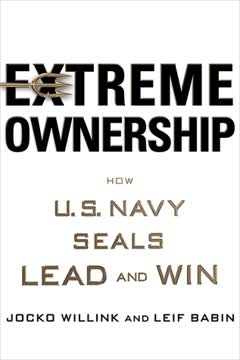Key Takeaways
1. Build a Solid Foundation Before Chasing Weight
The most important part of any structure is the foundation.
Foundation first. Before attempting maximal weights, a powerlifter must build a strong foundation focusing on proper form, developing supporting musculature, and increasing work capacity. Skipping this crucial phase often leads to injury and stalled progress, as seen when neophytes rush under heavy bars.
Work capacity matters. The ability to complete workouts efficiently and recover between sets and attempts is vital. Develop work capacity by incorporating exercises like sled drags, complexes, or supersets, especially towards the end of training sessions when fatigue is already present.
Form over weight. Perfecting technique is non-negotiable. Every repetition, from an empty bar warm-up to a maximal attempt, must be performed with the exact same, correct form. Use progressions like counterbalance squats or Dimel deadlifts to learn proper movement patterns before adding significant load.
2. Master the Mechanics of the Big Three Lifts
Without question, the squat is the greatest exercise someone can do to develop the legs.
Squat mastery. The squat is complex, requiring attention to bar placement (low-bar often preferred for leverage), foot stance (influenced by genetics), head position (straight ahead for balance), and breathing (Valsalva maneuver for tightness). The goal is a controlled descent below parallel, driving hips and shoulders simultaneously on the ascent.
- Low-bar placement: 1-2 inches below the trap.
- Stance: Varies from narrow to wide based on limb length and back length.
- Breathing: Inhale deeply before unracking, hold through descent and most of ascent.
Bench press technique. Often underestimated, the bench press requires pulling shoulder blades together, tucking lats, and using leg drive. Technique varies between straight-line (flatter back) and J-curve (arched back, elbow transition) styles, especially with shirts. Proper handoff and bar path are critical.
- Setup: Head, shoulders, buttocks on bench; feet flat on floor.
- Grip: Thumbs around the bar, hand spacing up to 81 cm.
- Command sequence: Start, Press, Rack.
Deadlift execution. The deadlift is a test of total body strength, starting from a dead stop. Styles include conventional (feet narrow, hands outside) and sumo (feet wide, hands inside). Key is keeping the bar close, maintaining a flat back, and driving with the legs and hips, not jerking the weight.
- Grips: Alternated grip is most common for strength.
- Conventional: Shins close to bar, hips higher than knees initially.
- Sumo: Wide stance, toes pointed out, hands inside legs.
3. Fuel Your Body Wisely for Strength and Recovery
Proper nutrition helps you recover for the next workout, have more energy during the workout, and be less likely to get injured.
Macronutrient essentials. Protein is crucial for muscle repair and growth (1.5-2.0 g/kg bodyweight). Carbohydrates are the primary energy source, with complex carbs providing sustained fuel. Fats are important for hormone function and vitamin absorption (25-30% of daily calories).
- Protein sources: Meat, fish, eggs, dairy, nuts, legumes.
- Complex carbs: Pasta, potatoes, brown rice, sweet potatoes, whole grains.
- Unsaturated fats: Olive oil, almonds, fish, flax.
Hydration is non-negotiable. Water makes up 60% of the body and 80% of muscle. Dehydration (2-3% bodyweight loss) significantly impairs performance, strength, endurance, and increases injury risk. Urine color should be light yellow or clear.
- Dehydration effects: Increased heart rate, decreased cardiac output, decreased endurance/strength/power, increased cramping/injury risk.
- Hydrating beverages: Water, sports drinks, lemonade.
- Non-hydrating beverages: Caffeinated drinks (mild diuretic), alcohol (dehydrating).
Weight management strategies. Gain weight slowly (1-2 lbs/week) to maximize muscle gain over fat gain, requiring ~500 extra calories/day. Lose weight slowly (1 lb/week) to preserve muscle, requiring a ~500 calorie deficit/day. Consistency in diet is the magic key for both.
- Calorie estimate for gain: Bodyweight (lbs) x 18-19.
- Calorie estimate for loss: Bodyweight (lbs) x 12-13.
- Food choices: Lean protein, low glycemic index carbs for loss; higher glycemic index carbs for hard gainers.
4. Prepare Your Body with Dynamic Warm-ups and Mobility
To improve ability as a powerlifter, you need to improve mobility.
Mobility over flexibility. Mobility is the ability of a joint to move through a full range of motion (dynamic), while flexibility is the ability of a muscle to get into a position (static). Powerlifting requires dynamic movement, making mobility training more relevant for performance.
Dynamic warm-ups. These combine warming up and stretching, mimicking sport-specific movements. Benefits include increased body temperature, respiratory rate, blood flow to muscles, scar tissue breakup, tendon/ligament elasticity, and mental readiness. Perform before training or competition.
- Benefits: Higher body temp, increased respiration, oxygen flow, capillary activation, scar tissue breakup, increased elasticity, mental readiness, better agonist-antagonist relationship, ability to handle heavier loads.
- Examples: Arm circles, body twists, leg swings, lunges, body squats, Spider-man, barbell/dumbbell/kettlebell/medicine ball complexes.
Post-workout cool-down. Static stretching is best performed after a workout when muscles are warm. This helps speed recovery, remove lactic acid, decrease soreness/stiffness, and return muscles to their normal length. Aim for 5 minutes focusing on trained muscles.
- Benefits: Speeds recovery, decreases soreness/stiffness, aids transition back to normal life.
- Examples: Half hurdler, V-sit, pretzel stretch, butterfly, kneeling quad/hip flexor, lying reverse trunk twist, sleeper stretch, 90/90, overhead triceps stretch.
5. Plan Your Progress with Periodization Cycles
Periodization is simply a means of planning and organizing training.
Structured training. Periodization provides a roadmap to consistently increase strength over time, especially for experienced lifters. It involves planning training cycles (e.g., 12-16 weeks) with varying intensities, volumes, and exercises to prevent plateaus and optimize performance for competition.
Undulating periodization. This method constantly varies the repetition maximum (RM) target in each workout (e.g., 6RM, 4RM, 2RM). This prevents the body from fully adapting to a single stimulus, keeping it responsive. It can be applied to single lifts or multiple lifts concurrently.
- Variation: Vary RM by at least 2 (e.g., 6RM then 4RM).
- Frequency: Train lifts at least once a week, often twice or thrice.
- Tracking: Monitor RM progress or use estimated 1RM.
Conjugate method. This method focuses on developing multiple strength traits simultaneously: absolute strength (max effort >90% 1RM, rotating exercises), dynamic strength (submaximal weight at maximal velocity, 30-70% 1RM), and hypertrophy (repetitive effort >6 reps). Exercises change frequently (every 1-3 weeks) to prevent adaptation.
- Max effort: Rotate exercises every 1-3 weeks (e.g., board press, floor press, rack press).
- Dynamic effort: Move weight fast (0.7-1.0 m/s), improves strength-speed and technique.
- Repetitive effort: Higher volume (6-20 reps) for muscle growth.
6. The Mind is the Ultimate Powerlifting Weapon
The mind, not the platform, is the true battlefield of powerlifting.
Arousal management. Optimal performance occurs at a specific level of arousal (psyched-up state), which varies by individual, lift, and whether gear is used. Too little arousal leads to lack of focus; too much leads to technical breakdown. Mastery of a skill allows for higher arousal levels.
Relaxation techniques. Combat stress and nerves through physical relaxation (contracting/relaxing muscles) or guided relaxation (using scripts or recordings). Regular practice creates a conditioned response, allowing you to calm down on demand, especially on meet day.
- Physical relaxation: Contract muscle, hold, release, feel warmth/heaviness, use verbal cue ("relax").
- Guided relaxation: Listen to a guide, visualize calming scenes, use affirmations.
Positive self-talk. Your internal dialogue significantly impacts performance. Use affirmations (positive statements in the present tense) to replace negative thoughts and build confidence. Write them down, review them with emotion, and believe them.
- Affirmation rules: Positive, present tense, specific, emotional belief, frequent review.
- Thought stoppage: Consciously stop negative thoughts and replace them with positive ones.
7. Leverage Equipment as a Tool, Not a Crutch
The tighter the gear, the more assistance it gives, and the higher total you can expect.
Gear enhances, doesn't replace. Powerlifting gear (suits, shirts, wraps, belts) provides support and can increase lift numbers, but it requires specific technique and underlying raw strength. Training exclusively in gear without building raw strength leads to reliance and potential injury.
Learn your gear. Each piece of equipment has nuances. Start with looser gear to learn the groove and feel the support before moving to tighter, more restrictive pieces. Gradually add gear during training cycles as intensity increases.
- Squat gear progression: Briefs -> Knee wraps -> Suit straps down -> Full suit.
- Bench gear: Shirt requires learning specific bar path and elbow transition.
- Deadlift gear: Suit helps with initial pull and lockout.
Force your form. The gear should conform to your technique, not the other way around. Maintain proper body position and movement patterns despite the gear's resistance. If gear is too tight, it can alter form, cause pain, and hinder performance.
- Too tight gear issues: Alters form, causes pain, reduces focus, risks injury (e.g., forearm fractures).
- Raw strength base: Must be strong enough raw to handle the forces and positions imposed by tight gear.
8. Execute Meet Day with Precision and Confidence
What you do on meet day and the day before can make or break the performance.
Preparation is paramount. Plan travel, confirm weigh-in times, check weight on a meet scale, and have all required equipment (with backups). Attend the rule briefing to clarify any uncertainties. Mental preparation through visualization is crucial.
Warm-up strategy. Time your warm-ups based on your flight number to ensure you are ready when called to the platform but not fatigued. Gradually add gear during warm-ups, finishing your last warm-up fully geared shortly before your first attempt.
- First flight: Start warm-up ~30 mins before meet start.
- Later flights: Start warm-up when the previous flight begins their first attempts.
- Gear timing: Add gear progressively during warm-ups.
Attempt selection. Work with your handler or coach to select conservative openers you can hit for multiple reps, even on a bad day. Aim to go 9 for 9 (successful lifts) to build confidence and achieve a total. Subsequent attempts should be strategic, considering your performance and competition.
- Opener: A weight you can hit for 3-5 reps easily in training.
- Goal: Make all three attempts on each lift for a total.
- Strategy: Stick to planned attempts unless performance dictates otherwise.
9. Progressive Overload Drives Strength Gains
The progressive overload principle states that once the body adapts to the imposed demand from the SAID principle, you need a heavier weight.
SAID principle. Specific Adaptations to Imposed Demands means the body gets better at exactly what you train it to do. To get stronger, you must impose the demand of lifting progressively heavier weights.
Continuous challenge. Once your body adapts to a certain load or volume, you must increase the demand to continue making gains. This can be done by adding weight, increasing reps, increasing sets, reducing rest, or increasing training frequency.
- Methods: Increase weight, reps, sets, decrease rest, increase frequency.
- Example (Milo of Croton): Lifting a calf daily as it grew, progressively increasing the load.
Application in programming. Both foundational and advanced training methods incorporate progressive overload. Simple programs like 5x5 or APRE use weekly weight increases based on performance. Periodization cycles systematically increase intensity and volume over longer periods.
- 5x5: Add weight weekly if all 5 sets of 5 reps are completed.
- APRE: Adjust weight for subsequent sets and the next week based on reps achieved to failure.
- Periodization: Cycles build intensity over weeks/months.
Last updated:
Review Summary
Readers praise Powerlifting as an informative and comprehensive guide suitable for beginners and experienced lifters alike. Many found it easy to read and navigate, with valuable information on technique, training, and competition. The book's principles helped readers improve their lifts and body composition. Some noted its focus on beginners, while others appreciated specific topics like APRE and visualization. The Spanish version received positive feedback for its supervision. Overall, reviewers highly recommend the book for those interested in strength sports or understanding powerlifting.
Similar Books









Download PDF
Download EPUB
.epub digital book format is ideal for reading ebooks on phones, tablets, and e-readers.




